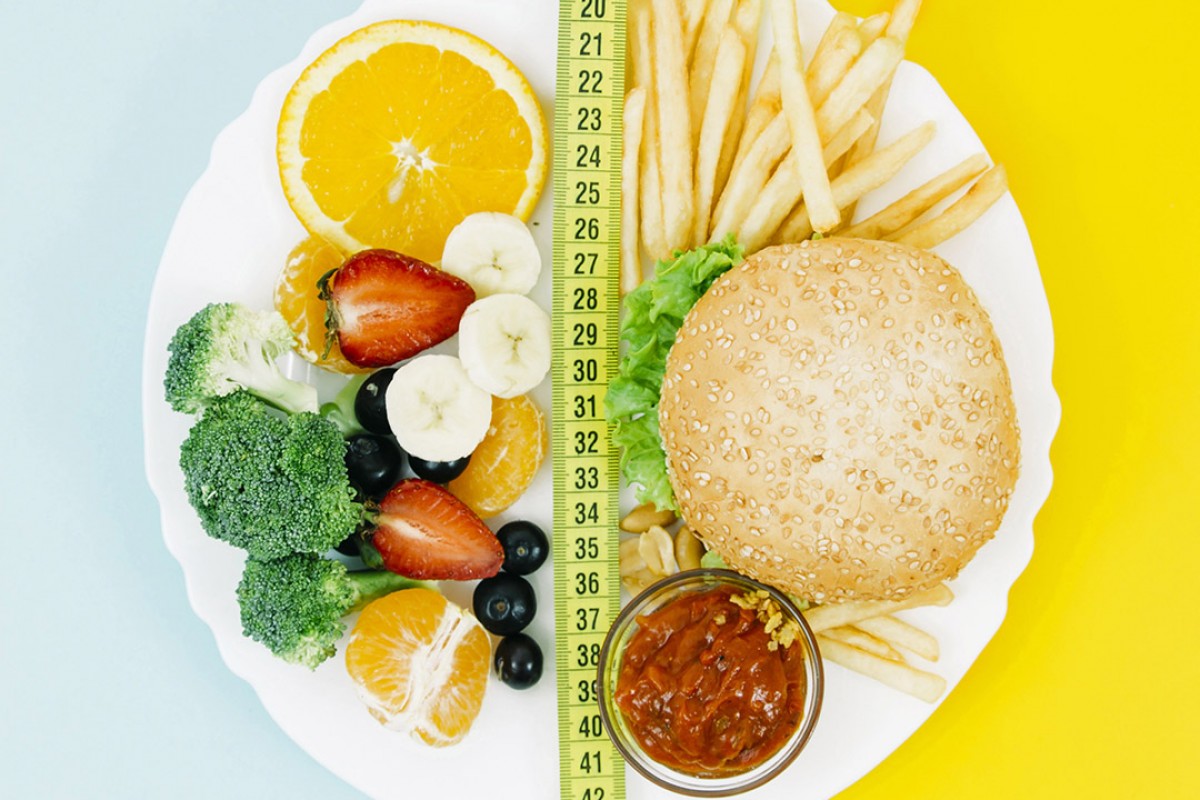
That blood-sugar balancing act behind most health concerns
That blood-sugar balancing act behind most health concerns
Raffaella Quieti Cartledge
Reducing sugar intake and taking steps to improve ‘blood sugar balance’ are vital to support optimal health overall. But what exactly is blood sugar balance, why is it so important and can you modulate those sugar cravings for good? Nutritionists Roberta Baldo and Caroline Mason give us nutrition and lifestyle advice to help us tackle the metabolic issues behind most contemporary pathologies.
Why is keeping a balance in our blood sugar so crucial for our health ?
We all have a small amount of sugar (glucose) in our blood at any one time. We need this for our day-to-day functions and it’s important it doesn’t drop too low or rise too high. Low blood sugar is particularly problematic for the brain, since it relies heavily on blood sugar as a constant source of fuel. In fact, sugar cravings are often your body’s way of asking for more sugar when it’s dipped too low. In contrast, when blood sugar is too high this can cause tissue damage over time. In order to favour good health, we need our blood sugar to be ‘just right’.
How does the body regulate blood sugar ?
Fortunately, we have in-built mechanisms to keep blood sugar in balance and our bodies are constantly working to keep levels within a tightly regulated range. Just like calling out the emergency services though, you don’t want to be continually asking your body to step in to deal with blood sugar highs and lows as this can place too much pressure on these mechanisms over time.
Diet and lifestyle factors can play a massive part in this balance; with some factors being very supportive and others more disruptive. Supporting your blood sugar balance through diet
& lifestyle factors will take pressure off internal systems. Not only will you feel better and experience less sugar cravings, but your health will benefit massively as a result.
What are other symptoms linked to blood sugar imbalances ?
Some of the common symptoms linked to blood sugar imbalance include irritability, anxiety, depression, mood swings, poor concentration, brain fog, insomnia, cravings, especially for sweet foods, excessive thirst, excessive sweating, addictions to caffeine containing drinks and/or alcohol and cigarettes, drowsiness during the day, fat storage, especially around the midriff, difficulty losing weight
What are some Baldo & Mason’s tips to help regulate blood glucose ?
Increase essential fatty acids such as cold-water fish, nuts, seeds, and hemp seeds.
Have the right amount of protein for your weight. If you multiply your body weight in kilos, for 0.83, you will get the amount of protein in grams that your body needs daily.
Eat plenty of fibre such as legumes, beans, flax seeds, chia seeds, oats, hemp seeds, nuts and seeds. Fibre will keep you full longer and help you crave less sugar.
Focus on eating complex carbohydrates such as brown rice, quinoa, oats, rye bread, beans and lentils; they take longer for the body to break down, providing a slow sustained release of energy.
Eat regular balanced meals, do not forget breakfast! Combine complex carbohydrates with proteins and fats at every meal and most snacks which slows down the release of glucose. Opt for more plant-based proteins, e.g. nuts, humus and keep red meat to a minimum.
Choose low glycaemic foods which release glucose at a slower rate because they take longer to break down in the intestine. Examples include sweet potatoes, green apples, berries, beans, and oats.
Increase antioxidants such as raw cacao, blueberries, prunes, pomegranates, kale, Brussel sprouts, beets, and red bell peppers.
Add cinnamon to your food or drink. Real cinnamon contains polyphenols that help maintain insulin sensitivity.
Increase chromium-rich foods. Chromium contributes to blood glucose metabolism and regulation. Sources include broccoli, barley, oats, green beans, tomatoes, brewer’s yeast, black pepper.
Drink water. Aim for 2 litres per day, for variety add lemon, mint or other fruits or try herbal teas.
Reduce mental and emotional stressors. Long-term stress may result in adrenal fatigue, which affects blood sugar. Practices such as yoga and meditation can help to reduce stress.
Have a good-night sleep. Good sleep helps maintain your blood sugar levels and promotes a healthy weight. On the other hand, poor sleep can disrupt critical metabolic hormones.
Exercise regularly. 30-60 min, 3+ times a week. It helps to lose weight and increase insulin sensitivity.
Limit or avoid refined carbohydrates (white bread, white rice), added sugars, fizzy drinks, squashes, fruit juices. They provide a fast release of glucose into the blood followed by a crash. Stimulants such as coffee, tea, energy drinks as well as alcohol and artificial sweeteners which disrupt blood sugar balance.
Checking your blood glucose and maintaining a daily log enables you to adjust foods and medications when necessary to better manage your blood sugar levels. When we see patients who we think might benefit from it, we recommend wearing a blood-glucose monitoring device. On our Instagram profile we have a series of videos explaining how to apply it and use it. It is a powerful and empowering tool.
| Blood Sugar Balancing | Blood Sugar Disrupting |
| Eat within an 8 – 10 hr daily window | Erratic eating habits |
| Evening meal before 7pm | Eating late at night |
| Herbal teas | Caffeine |
| Fresh filtered water | Alcohol |
| 3 distinct meals daily & limited snacks | Constant snacking |
| Good quality protein (meat, poultry, fish, legumes, tempeh, eggs) and fat (nuts, seeds and their oils, avocado, olives, full fat dairy, grass fed butter) with each meal | Excessive intake of starchy carbohydrates (bread, pasta, rice, potatoes) |
| Nutrient dense wholefoods / meals cooked from scratch | Refined / Processed / Fast / Convenience foods |
| Berries (strawberries, raspberries, blueberries, blackberries) | Fruit juice / Excessive intake of fruit (particularly tropical fruit) |
| Lower carbohydrate vegetables such as leafy greens, salad leaves, cauliflower, broccoli, courgette, mushrooms (especially Shiitake mushrooms), asparagus and celeriac | Excessive intake of higher carbohydrate vegetables such as carrots, parsnips, turnips, beetroot, potatoes and squash |
| Fibre (vegetables, nuts, seeds, complex wholegrains) | Refined carbohydrates |
| Dark chocolate (at least 85% cocoa solids) | Milk / white chocolate |
| Blood sugar support phytonutrients & nutrients – Cinnamon, Chromium & Alpha Lipoic Acid | Sugary drinks and snacks |
| Relaxation | Stress |
| Exercise | Inactivity |
| Eating at the table | Eating on the run |
| Consistent good quality sleep | Lack of sleep |
What is the most important meal for blood sugar balance ?
Caroline Mason : Breakfast is a must when there is a blood-sugar control issue. The reason a balanced morning meal is so important is because it supports stable blood sugar, which is essential to maintaining your energy and a positive mood—key to having a productive, enjoyable day. How can we make breakfast easy and enjoyable to stay on track with our goals?
Consuming protein and fat along with fibre slows digestion down so you don’t experience a sharp spike and then crash in blood sugar. Fibre also helps slow the process, which is why foods like berries, whole grains, sweet potatoes, and beans are a better choice compared to more refined carbs like white bread, pastries, and white potatoes.
A common mistake we see is someone eating a big bowl of oatmeal with banana and drinking a (sugar-sweetened) almond milk latte, then wondering why they’re starving shortly after. Sure, you’re getting plenty of complex carbs and fibre, but almost zero fat or protein to balance out the meal.
Another big one: gulping down a smoothie with three servings worth of fruit (it can be hard to tell how much is in there when it’s all getting liquified) with sweetened almond milk and maybe a tablespoon of nut butter, which isn’t enough to balance out all the carbs in the fruit and sugar in the almond milk, so you can end up wiped and hangry by 10 a.m.
What are your favourite breakfast recipes to help modulate blood sugar ?
- Avocado and egg over greens You can add some tomatoes or berries on the side too. Why it works: You’re getting a powerful combination of protein, fat, and fibre, plus some complex carbs and brain-boosting antioxidants in the fruit. It’s really versatile because you can enjoy with cooked greens (great if you have leftovers) or over raw greens for more of a breakfast salad. If you’re making this at home, fried or scrambled eggs are great (using coconut oil), and poached are perfect if you enjoy that runny yolk. Taking your breakfast to go? Do hard-boiled eggs.
- Gluten Free Oats with plant-based protein
The oats provided those good carbs, and I’d also cook in chia seeds or ground flax for added fibre and plant-based omega-3s. One scoop of plant-based protein powder whisked in while cooking, contributes to the protein content. Topping your bowl with a drizzle of nut butter adds more healthy fats and fibre, plus a little extra protein. Just be mindful of portion sizes. I usually recommend 1⁄3 cup of rolled gluten free oats or 3 tbsp of steel-cut or 1 tbsp chia or flax cooked with water or whatever spices you like.
Plant- based eaters might also want to use a protein-rich non-dairy milk like pea-protein milk instead of water to cook their oats.
- Veggie Omlette
Whether you’re making it from scratch or using leftover cooked vegetables, a colourful omelette is a great way to start your day, thanks to the combination of protein, fat & fibre. Adding a side of berries or sweet potato provides some complex carbs. If you need a make-ahead option, try a frittata or minis made in muffin cups. Don’t eat eggs? No problem. A tofu and veggie scramble also makes for a winning breakfast. You’ll still get some healthy fat from the oil used in cooking, and if you’re enjoying yours with whole grain or sweet potato toast, a spread of nut butter or tahini adds some additional staying power. Avocado slices are also delicious on top of a tofu scramble.
- Yogurt Bowl
Coconut or organic soya yogurt make a great base for a high- protein meal or snack. Add chia seeds, vanilla extract, and cinnamon and top your bowl with beautiful berries, fresh or frozen—both are great! Want a little something more? Drizzle a teaspoon of nut butter or garnish with cacao nibs, coconut flakes, or your favourite nuts or seeds. My favourite weird-is-good mix-in is cocoa powder. Aside from enjoying delicious flavour, you’ll get an extra gram or two of fibre and a fluffy texture. Just go slow with sweeteners—a teaspoon of honey, maple syrup, or jam go a lot further than you might think.
___
SIMPLE VS COMPLEX CARBS
If we eat sugar in the form of complex carbohydrates (vegetables, beans and pulses or wholegrains), then sugar will be released from these gradually and the level in the bloodstream will stay within the green zone. It will rise and fall a little as we eat and become hungry again, but provided we eat sufficient of the right kind of food at regular intervals, it will stay within acceptable range.
Highly processed and sugary foods cause blood sugar to rise quickly; it’s why we get a sudden lift or boost of energy from eating them. But this sudden rise is dangerous for the body, so it produces insulin to remove some of the sugar and store it as fat. Blood sugar levels then drop below normal (see diagram) and we are left feeling hungry, lethargic or craving sugar and stimulants such as coffee or cigarettes.
Stimulants work by kicking our adrenal glands to release an emergency supply of energy. Eating over-processed and sugary foods means that we are on a roller-coaster ride of highs and lows, which as well as affecting our physical health can also impinge on our mood and behaviour, leading to great swings from euphoria to depression, hyperactivity to exhaustion, clear thinking to mental fog.
Roberta Baldo and Caroline Mason are Registered Nutritional Therapists who practice in London, UK.
Together, they offer a combined and unique approach to Nutritional Therapy – scientific nutrition expertise and psychological behavioural expertise blended together to educate, change and support our clients’ relationships with food, positively and permanently. They also work closely with medical professionals, doctors and therapists to ensure our clients receive the best possible care.










